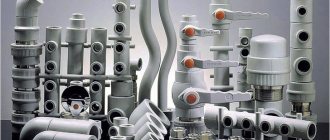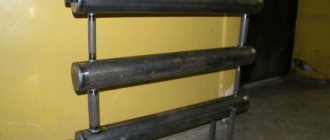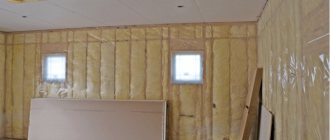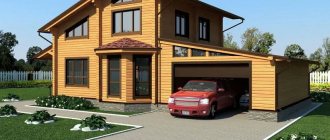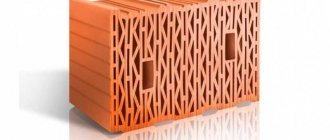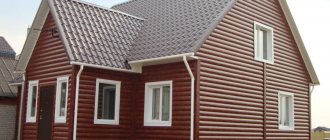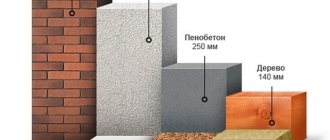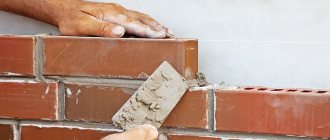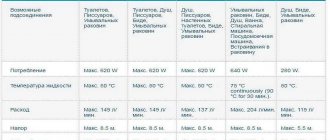Polypropylene is a white solid, a product of the polymerization of propylene and belongs to the class of polyolefins. Simply put, it is a plastic polymer with a wide range of applications. Today it is the most popular modern plastic due to its excellent consumer properties and versatility of use.
The material is obtained from propylene, whose formula is C3H6, as a result of the reaction between propene and a Ziegler-Natta catalyst. Thus, its chemical formula looks like this – (C3H6)*n. Today there are several varieties of this substance, they all have the same formula, but differ in spatial structure: isotactic, syndiotactic, atactic.
Each of them has its own physical and chemical properties. For example, an atactic polymer is characterized by fluidity and a low melting point, while an isotactic polymer, on the contrary, is elastic and dense and melts at 170 degrees Celsius.
Specifications
Today, polypropylene ranks second in the world market in terms of consumption, slightly inferior to polyethylene.
Let's consider its physical and chemical characteristics, which directly affect the scope of application.
Basic physical properties
- Low material density. Polypropylene has the lowest density of all plastics, which sets it apart from its denser counterparts.
- High strength. Numerous experiments have shown that it can withstand heavy loads, which far exceeds the capabilities of polyethylene.
- Low temperature resistance. The polymer copes well with negative temperatures, withstanding -10 degrees Celsius and lower temperatures.
- High temperature resistance. It can withstand not only low but also high temperatures, its melting point is 160 – 170 degrees Celsius.
- Resistant to sudden temperature changes. A quick change in temperature is also not a problem for this material. It withstands the rapid transition from minus to plus and back.
- Excellent dielectric properties. The high dielectric constant together with high dielectric strength provide wide possibilities for its use as an electrical insulating material.
- Easy processing. Polypropylene is easy to weld, cut, drill, and bends well, which significantly expands the possibilities of its use in industry and everyday life.
Chemical characteristics
- Resistance to chemical aggression. This feature of the material allows it to be widely used for the needs of chemical enterprises. It can withstand exposure to hot metal, various acids and fumes. In particular, this property is used in the manufacture of air ducts and ventilation for hazardous industries.
- Environmentally friendly and safe for the environment and humans. Numerous experiments have proven the non-toxicity and absolute environmental safety of this material for the environment and humans. Therefore, it is used in the production of water containers, as well as various liquids and bulk food products. Very often it is used in the construction of water purification facilities.
The main technical characteristics and properties of polypropylene are presented in the table.
| Basic properties of polypropylene | |
| Density, g/cm | 0,90 – 0,92 |
| Mass fraction of isotactic fraction, % | 95 – 98 |
| Mass fraction of atactic fraction, % | 2 – 5 |
| Tensile strength, kg/cm2 | 260 – 400 |
| Elongation at break, % | 200 – 700 |
| Melting point, Cº | 160 – 170 |
| Glass transition temperature, Cº | -10… — 20 |
| Degree of crystallinity, % | 50 – 75 |
| Frost resistance, Cº | — 10 and below |
| Thermal conductivity, cal/sec*cm*deg | 0,00033 |
| Specific heat capacity, cal/g*deg | 0,40 – 0,50 |
Chemical properties of polypropylene
Polypropylene, a relatively chemically resistant material. It does not react with most acids, which allows it to be widely used in the chemical industry, especially when installing ventilation ducts, in chemical and industrial plants.
Strong oxidizing agents such as nitric acid, oleum, and halogens have a more significant effect on polypropylene. Concentrated sulfuric acid and hydrogen peroxide react only with prolonged contact and at a temperature of 600 C, they lead to the destruction of the material.
Numerous studies have shown that polypropylene has high environmental and human safety indicators. It will not release harmful substances into the environment. It can be safely, without fear of poisoning, used to make containers for drinking water and food.
Scope of application
The production of polymer materials was a real breakthrough in its time. Low cost and excellent physical and chemical properties of polypropylene have contributed to the development of many industries. Thanks to the introduction of new technologies, it was possible to increase production efficiency and replace many expensive materials with more modern and progressive ones.
Polypropylene has served as the basis for the production of many modified materials, including high-strength plastics and mixed thermoplastic elastomers.
New high-tech materials are environmentally friendly and can be easily recycled and disposed of.
All this contributes to the fact that polypropylene is gradually displacing materials such as polyvinyl chloride, ABS plastic, polystyrene and others from the market. Widely used in all key sectors of the modern global economy: electronics, mechanical engineering, construction and many others. Largely for this reason, polypropylene has received the popular name “king of plastics.” And although it is not yet a leader in its segment, its scope is gradually expanding.
Advantages
Plastic pipes do not have problems with corrosion - and this is their main advantage over, for example, steel pipes. If we compare it with stainless or copper pipes, which are also famous for their durability, then plastic ones are much more expensive.
The smooth internal surface ensures a good speed of water movement in the water supply system; the pipes are not overgrown with scale and deposits.
This means that the throughput and efficiency of the pipeline does not change over the years, because the clearance remains the same diameter.
Another factor in favor of plastic is the ease of installation. The pipes are lightweight, so you can bring them in a family car and unload them yourself. For connections, fittings or a soldering iron are used, which is easy to master even for non-professional construction workers.
Price, corrosion resistance, service life of half a century and ease of installation have made plastic pipes a popular product!
Packaging materials and polypropylene fibers
Polypropylene is widely used in packaging. For example, polypropylene films are perhaps the most popular packaging material in the world. In some ways they are similar to polyethylene, but in some respects they even surpass it. The main advantages of polypropylene film over polyethylene are as follows:
- better resistance to high temperatures and aggressive substances;
- excellent consumer properties - transparency, strength, flexibility and environmental friendliness;
- best presentation characteristics.
Not long ago, so-called oriented films appeared on the market; a special production technology made it possible to significantly improve the already excellent qualities of polypropylene films. For example, the transparency of oriented film is four times better than that of conventional polypropylene material.
In recent years, polypropylene has become often used in the production of plastic containers - bottles, cans and other containers, as well as lids for them. In addition, it is used for the production of various containers and tanks for transporting chemicals.
The low cost of polypropylene fibers has ensured their widespread use in the textile industry.
Having a low cost, they are characterized by high strength and good elasticity. Another advantage of these synthetic fibers is their excellent heat resistance. Their only significant drawback is sensitivity to ultraviolet radiation, which somewhat hinders the widespread distribution of polypropylene fibers.
Polypropylene recycling
Nowadays, there are five main ways of processing polypropylene - extrusion, blowing, injection molding, foaming, molding.
Processing methods such as casting and extrusion are the most popular at present. Under their influence, extruded and injection molded polypropylene is obtained.
Extruded is made in the following way: polypropylene powder or granules are loaded into a chamber heated by steam, and the compound is squeezed out of it through a molding hole. As it leaves the reactor, the polypropylene hardens.
Molded polypropylene is produced by heating powdered/granular polypropylene without access to air, creating a viscous, fluid substance, then it is transferred to a mold where hardening occurs.
Application in mechanical engineering and electronics
The widespread use of the material in mechanical engineering, automotive and construction was facilitated by its high wear resistance. Many components for household appliances - refrigerators, vacuum cleaners, washing machines - are made from polypropylene. This synthetic material is also used in the production of cars. In particular, it is used to make interior parts, bumpers, shock absorbers and much more.
In electronics, it is used to produce housings for televisions, telephones, coils, lamp sockets, elements of switches - it is simply impossible to list everything. It's easier to say that polypropylene surrounds us everywhere in everyday life.
Polyethylene is a polymer with a wide temperature range of operation.
Polyethylene, depending on its density, melts at temperatures in the range of 105-135 degrees, and this high-pressure material is subject to melting only at 137 degrees. This parameter, as well as stability at low temperatures, allows you to effectively and safely use polyethylene/products made from it in the range of -60 – +100 degrees.
The so-called “cross-linked” polyethylene differs from conventional polyethylene in its higher technical parameters (melting point - 200 degrees, greater density and strength, resistance to aggressive chemicals, the presence of “shape memory”). It is produced by polymerizing ethylene under high pressure.
Goods for children
The exceptional safety of the material allows it to be used for the production of children's products.
Dishes, household items, toys and many other products for little ones are made from polypropylene.
The combination of several of its properties - environmental friendliness, high wear resistance, strength - determine its widespread use in everyday life.
World consumption of polypropylene is increasing every year. Its share in the production of consumer goods is steadily growing. It is gradually capturing new market segments, displacing less technologically advanced polymers, primarily polystyrene and PVC. Inferior in terms of environmental friendliness, they are gradually losing their position in the global market. Under public influence, European legislators are slowly but surely clearing the way for new technologies. Such important indicators as non-toxicity and easy disposal confidently make it a leader.
Another important factor contributing to the growing popularity of the substance is its low price compared to its competitors. Cost is the determining criterion in the production of any product, and therefore manufacturers are increasingly turning their attention towards cheaper and more technologically advanced materials.
The prospects for this high-tech material are very bright. It is obvious that its percentage in world consumption will increase. This is facilitated by constant research and the emergence of new technologies and modifications of polypropylene. Most likely, this will continue until more advanced synthetic materials appear, but even then propylene will be widely used in industry and the national economy.
Areas of use of polyethylene pipes
The main areas of use of polyethylene pipes are gas and water supply systems.
The main areas of use of polyethylene pipes are gas and water supply systems. But the use cases don't end there. Polyethylene is successfully used when it is necessary to transport drinking and technical water, gas and its various mixtures, for sewerage installations, to protect electrical cables, in heating systems (for example, “warm floors”).
In the production of polyethylene pipes intended for water and gas pipelines, mainly brands of imported polyethylene (PE 80, PE 100) are used. The walls of polyethylene systems vary in thickness from 2.4 to 58.8 millimeters. The diameter varies from 20 to 1200 millimeters. The length of polyethylene structures can be up to 12 m and in coils up to 200 m long.
Installation of polyethylene pipes is easy and convenient. They can be connected either by heating the joints, or by using special fittings using the welding method.
Methods for connecting polyethylene pipes
Polyethylene pipes are quite technologically advanced and easy to install. You can create a water supply network from PEX pipes with your own hands, without the involvement of expensive specialists. Pipeline installation is carried out in three main ways.
Method: compression
To join pipes in this way, special press fittings are used, and the ability of polyethylene to restore its original shape.
The compression method does not require expensive tools; all work is done manually. A crimp nut is pulled onto the end of the pipe, then a shear ring is placed, which is fixed 1 mm from the end edge of the pipe. Then the compression fitting itself is pulled onto the end.
The same operation is performed with the end of the second pipe being joined, after which both halves of the fitting are joined and fastened together using a crimp nut. It should be twisted by hand using muscle force. Keys should be used only as a last resort, so as not to damage the plastic structure.
Method: crimping
PEX pipes are fastened using connecting fittings
The crimping method of connecting PEX pipes is carried out using a special hand tool - an expander. A crimping ring is put on one end of the pipes being joined, then using an expander, this end is expanded until the fitting fits freely into it.
The same operation is performed with the end of the second pipe. After a few minutes, the stretched ends of the polyethylene pipes return to their original size, tightly encircling the fitting. For greater reliability, a crimping ring is attached to the top.
Method: electric welding
A rather rare connection method, due to the need to have special expensive equipment.
The most expensive, in terms of financial costs, is the electric welding method of joining cross-linked polyethylene. To connect the pipes you will need special electric couplings. They are a regular external fitting, but inside of which a spiral of high resistivity metal conductor is laid. Two terminals extend outward from both ends of the spiral. A special welding machine is connected to them, heating the internal spiral to the required temperature.
The welding machine is an automatic device that reads information from the barcode of the electric coupling and independently selects the heating mode. After welding is completed, it signals the end of the process. As a result, the influence of the human factor on the result of work is completely eliminated. But this method is very expensive, and therefore it is not always cost-effective to purchase such a device for a one-time installation of a plumbing system inside a house.

